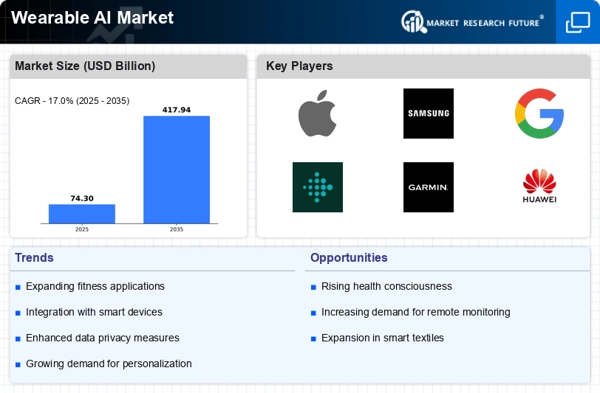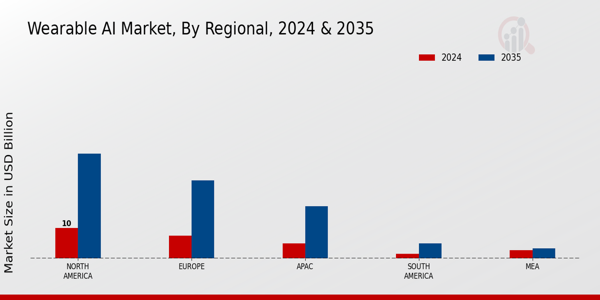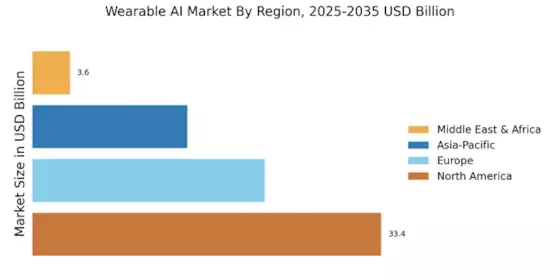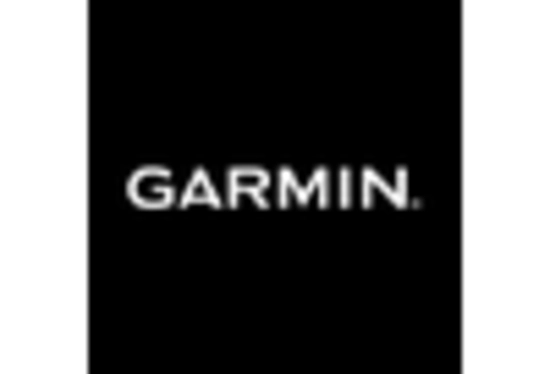Rising Health Consciousness
There is a notable increase in health consciousness among consumers, which is significantly influencing the Wearable AI Market. As individuals become more aware of the importance of health and fitness, the demand for wearable devices that monitor physical activity, heart rate, and sleep patterns is surging. Market data suggests that the fitness tracker segment alone is expected to witness a growth rate of approximately 20% annually. This trend is further fueled by the desire for personalized health insights, which wearable AI devices can provide. Consequently, manufacturers are focusing on developing advanced features that cater to this growing consumer demand, thereby enhancing their market presence.
Advancements in AI Technology
The rapid advancements in artificial intelligence technology are propelling the Wearable AI Market forward. Innovations in machine learning algorithms and data analytics are enhancing the capabilities of wearable devices, allowing for more accurate health monitoring and personalized user experiences. For instance, AI-driven wearables can now analyze biometric data in real-time, providing users with actionable insights. According to recent estimates, the AI segment within the wearable technology sector is projected to grow at a compound annual growth rate of over 25% through the next few years. This growth is indicative of the increasing reliance on AI to improve functionality and user engagement in wearable devices, thereby driving the overall market.
Growing Demand for Smart Wearables
The growing demand for smart wearables is significantly impacting the Wearable AI Market. Consumers are increasingly seeking multifunctional devices that not only track fitness metrics but also offer features such as notifications, navigation, and voice assistance. This trend is reflected in the rising sales of smartwatches and fitness bands, which are projected to account for a substantial share of the wearable technology market. Market analysts predict that the smart wearable segment will experience a growth rate of around 30% over the next few years. This surge in demand is prompting manufacturers to innovate and diversify their product offerings, thereby driving competition and market expansion.
Integration with Healthcare Systems
The integration of wearable AI devices with healthcare systems is emerging as a crucial driver for the Wearable AI Market. As healthcare providers increasingly adopt telemedicine and remote patient monitoring solutions, the demand for wearables that can seamlessly connect with electronic health records is rising. This integration allows for continuous health monitoring and timely interventions, which can lead to improved patient outcomes. Recent statistics indicate that the telehealth market is expected to reach a valuation of over 250 billion dollars in the coming years, highlighting the potential for wearables to play a pivotal role in this transformation. Such developments are likely to enhance the credibility and utility of wearable AI devices in the healthcare sector.
Increased Investment in Wearable Technology
There is a marked increase in investment in wearable technology, which is serving as a catalyst for the Wearable AI Market. Venture capitalists and tech companies are recognizing the potential of AI-driven wearables to transform various sectors, including healthcare, fitness, and entertainment. Recent reports indicate that investment in wearable technology startups has surged, with funding reaching billions of dollars in the past year alone. This influx of capital is enabling companies to accelerate research and development efforts, leading to the introduction of cutting-edge products. As a result, the market is likely to witness a wave of innovation, further solidifying the role of wearable AI devices in everyday life.


















Leave a Comment